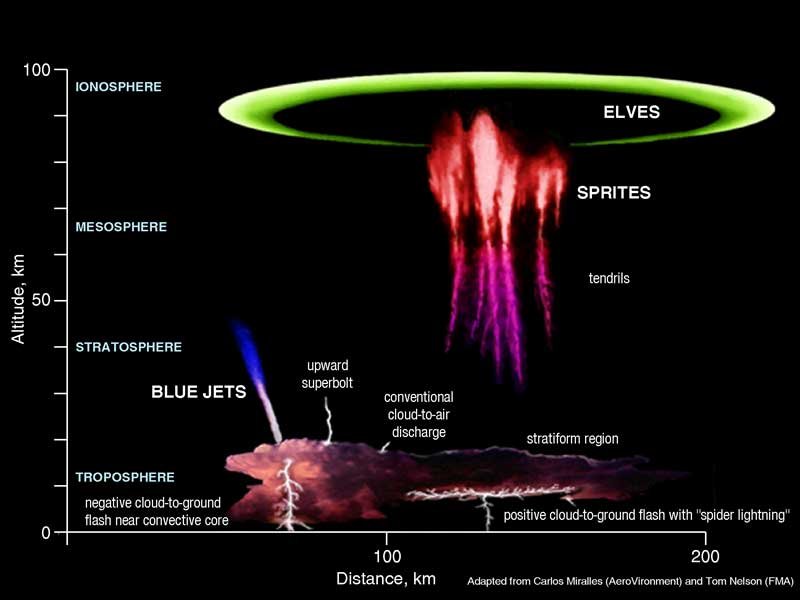5 Fun Facts about Lightning!🌩️
5 Fun Facts about Lightning 🌩️
Lightning happens in 3 different steps:
In a thunderstorm, water droplets in clouds get thrown about by strong up and downward facing winds. As they collide, their electrons get knocked off, which creates a separation of charges. The top of the cloud becomes positively charged, and the bottom of the cloud becomes negatively charged.
This separation of charges creates an electric field within the cloud. The strong negative charge at the bottom of the cloud induces a positive charge in the ground below.
When the electric field becomes strong enough, a discharge occurs. This can happen inside the cloud, between clouds (this is the most common type of lightning), or between clouds and the ground. What happens is that a channel of ionized air forms, allowing the electrical discharge to travel. When the electrons move this fast, it produces a flash of light and generates thunder due to the sudden expansion and contraction of the air heated by the lightning bolt. You can count the seconds between seeing the lightning and hearing the thunder to estimate how far away the storm is (you take the number of seconds, divide by 5, and that's how far the storm is in miles).
Here's some other amazing facts about lightning:
Lightning is incredibly fast - it can travel up to 270,000 mph!
Lightning is also incredibly hot! A lightning bolt can heat the air around it to as high as 54,000°F, which is nearly 5 times hotter than the surface of the sun!
There are about 100 lightning strikes per second around the world, meaning that there's about 8 million lightning strikes per day!
One common myth is that lightning doesn't strike the same place twice, but that isn't true! Lightning can definitely strike the same place twice, especially tall structures. Did you know that the Empire State building is hit 23 times a year? To this end, Benjamin Franklin invented something called the lightning rod.
Lightning rods are made out of some kind of conductive material (like aluminum) and mounted at the top of a building. It should be the highest point, so the lightning will strike the rod instead of the building itself. When lightning strikes the rod, the electrical current is conducted through a wire from the rod all the way to a ground buried in the earth. From there, the charge dissipates into the ground, protecting the building and everyone around from being struck!
Although rare, sprites and elves are other events that can happen during thunderstorms. Sprites are red flashes, and elves (“Emission of Light and Very low frequency perturbations due to Electromagnetic pulse Sources”) are dim, expanding disks of light. Here's a couple of pictures from some:
Image was taken from: Upper-atmospheric lightning - Wikipedia


